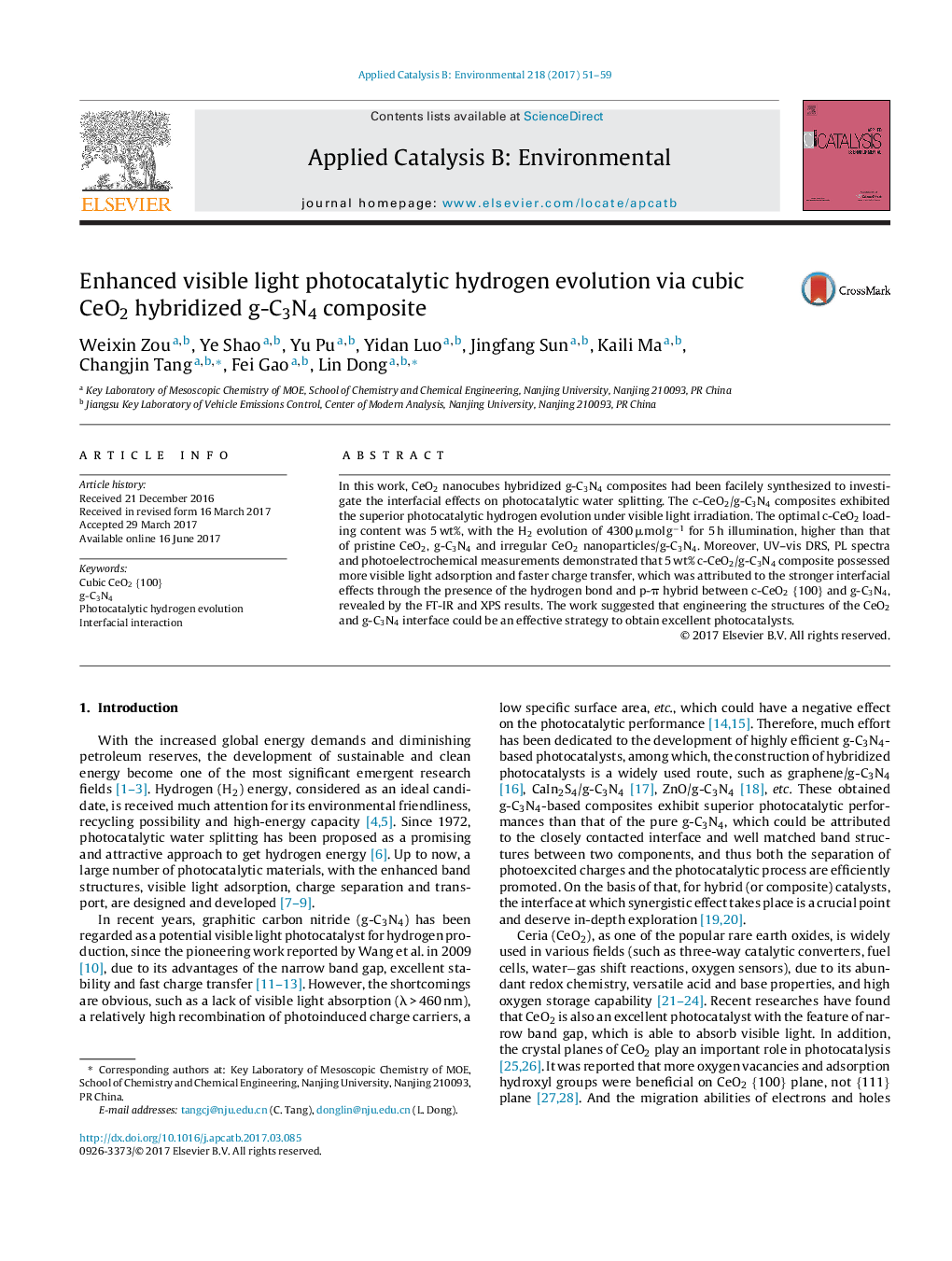| کد مقاله | کد نشریه | سال انتشار | مقاله انگلیسی | نسخه تمام متن |
|---|---|---|---|---|
| 6453695 | 1418802 | 2017 | 9 صفحه PDF | دانلود رایگان |

- Nanocubic CeO2 {100} plane hybridized g-C3N4 composites were synthesized.
- cCN5 had superior photocatalytic performance, for advantageous interfacial effects.
- The interfacial effects of cCN catalysts were via hydrogen bond and p-Ï hybrid.
- The possible photocatalytic mechanism was proposed.
In this work, CeO2 nanocubes hybridized g-C3N4 composites had been facilely synthesized to investigate the interfacial effects on photocatalytic water splitting. The c-CeO2/g-C3N4 composites exhibited the superior photocatalytic hydrogen evolution under visible light irradiation. The optimal c-CeO2 loading content was 5 wt%, with the H2 evolution of 4300 μmol gâ1 for 5 h illumination, higher than that of pristine CeO2, g-C3N4 and irregular CeO2 nanoparticles/g-C3N4. Moreover, UV-vis DRS, PL spectra and photoelectrochemical measurements demonstrated that 5 wt% c-CeO2/g-C3N4 composite possessed more visible light adsorption and faster charge transfer, which was attributed to the stronger interfacial effects through the presence of the hydrogen bond and p-Ï hybrid between c-CeO2 {100} and g-C3N4, revealed by the FT-IR and XPS results. The work suggested that engineering the structures of the CeO2 and g-C3N4 interface could be an effective strategy to obtain excellent photocatalysts.
109
Journal: Applied Catalysis B: Environmental - Volume 218, 5 December 2017, Pages 51-59